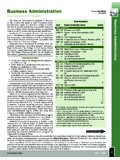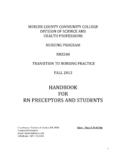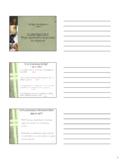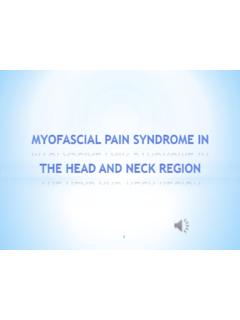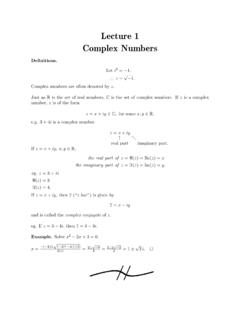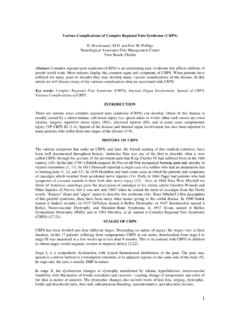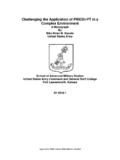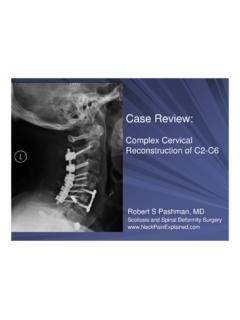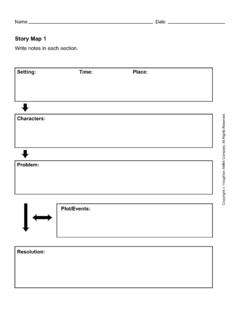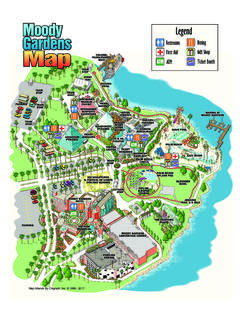Transcription of The Shoulder Complex & Shoulder Girdle - MCCC
1 The Shoulder Complex & Shoulder Girdle The Shoulder Complex 4 articulations involving The sternum The clavicle The ribs The scapula and The humerus necessary for stability, support, protection,locomotion, production of nutrientsWithWithout Bony Landmarks provide attachment points for muscles and ligaments In essence, they provide the direction (Vertebral)(Axillary)(Axillary)(Vertebra l)Scapula (Dorsal aspect)MedialLateralIntertubercular groove(Bicepital groove)(Posterior aspect)Intertubercular Groove (bicepital groove)Deltoid TuberosityAnatomical Neck Sternoclavicular- The ONLY bony attachment of the upper extremity to the axial skeleton Scapulothoracic Acromioclavicular Glenohumoral Kinematics Saddle joint permitting the clavicle to move in all 3 planes A fused SC would limit all Shoulder motion! Permits Elevation & Depression Protraction & Retraction Axial Rotation Motion between the scapula & rib cage Elevation & Depression The scapula must be able to slide over the rib cage Protraction & Retraction The scapula must be able to move medially and laterally around the rib cage Upward and Downward Rotation In the glenoid scapulae are inferior angle of the scapula can be visualized in A in a neutral position.
2 It moves up and out as the UE are flexed and ABDucted as indicated by the arrow in B. The reference points are the inferior and superior angles of the scapula. Humeral head & glenoid fossa Extreme motion in all 3 planes & Extreme instability Thin ligaments (secondary stability) Musculature (Primary Stability) Rotator Cuff Muscles surrounding the humeral head that actively hold the head against the glenoid fossa. Capsular Ligaments Thin fibrous capsule encasing the superior, middle and inferior aspects of the joint. Coracohumeral Ligament Limits extreme ER, flexion, extension and inferior displacement of the humeral head Glenoid Labrum A fibrocartilagenous ring that deepens the socket of the GH joint in the glenoid fossa. The proximal aspect wraps around the superior aspect of the humeral head, attaching to the superior glenoid tubercle Providing anterior stability as a partial extension of the glenoid labrum Ball and Socket Joint 3 degrees of freedom ABD/ADD Flexion/Extension IR/ER Special Motions: HABD/HADD During Shoulder ABDuction or flexion There is a 2:1 ratio between the GH joint motion and the scapulothoracic joint that take place For every 2 degrees of GH ABD The scapula upwardly rotates 1 degree Without scapular rotation, the humerus would not be able to attain full ROM, it would be impinged under the acromionUpper TrapeziusOriginOcciput, nuchalligament on cervical vertebraeInsertionLateral third of the clavicleActionScapular elevation & upward rotationInnervationSpinal accessory n.
3 (Cranial )Middle TrapeziusOriginNuchalligament, spinousprocesses of C7-T5 InsertionMedial aspect of acromionprocessActionScapular retractionInnervationSpinal Accessory n.(Cranial n. XI)Middle TrapLower TrapeziusOriginSpinousprocesses T6-T12 InsertionBase of the spine of the scapulaActionScapular depression, upward rotation and retraction of the scapulaInnervationSpinal accessory n., Cranial n. XILower TrapLevatorScapulaOriginTransverse processesof C1-C4 InsertionVertebral border of the scapula between the superiorangle and the base of the spineActionScapularelevation, downward rotationInnervationDorsalScapular n., (spinal nerves C3-C5)Levator ScapulaRhomboidsOriginNuchalligament and spinousprocessesC7-T5 InsertionVertebral border of the scapulafrom the base to the inferior angleActionScapular retraction & elevation, downward rotationInnervationDorsal scapular MinorRhomboid MajorSerratusAnteriorOriginExternalsurfa ce of the lateral first 9 ribsInsertionVertebralborder of the scapula near the inferior angleActionScapular protraction,upward rotation, holds the scapula against the posterior thoraxInnervationLong Winging(2oto weak serratus anterior)PectoralisMinorOriginAnterior aspect of ribs 3-5 InsertionCoracoidprocess of the scapulaActionScapular depression,downward rotation, anterior tiltInnervationMedial pectoral the scapulaInsertionGreater tubercle of the humerusActionShABD, stabilization of the GH, slight ERInnervationSuprascapularn.
4 Tidbit One of the rotator cuff musclesInfraspinatusOriginInfraspinatusf ossaof the scapulaInsertionGreater tubercle of the humerusActionShER, stabilization of the GH jointInnervationSuprascapularn. tidbit One of the rotator cuff musclesTeresMinorOriginPosterior lateral border of the scapula near the inferiorangleInsertionGreater tubercle of the humerus(inferior to the infraspinaus)ActionShER, stabilization of the GH the scapulaInsertionLesser tubercle of the humerusActionShIR, stabilizationof the GH joint InnervationUpper and lowersubscapularn. tidbit One of the rotator cuff muscles SITS Supraspinatus Infraspinatus Teres Minor SubscapularisLatissimusDorsiOriginThorac olumbarfascia,spinousprocesses of lower thoracic and lumbar vertebrae, posterior iliac crest, lower 4 ribs and inferior angle of scapulaInsertionFloor of intertuberculargroove of humerusActionShADD, Shextension, ShIR, scapular depressionInnervationThoracodorsaln. tidbit Necessary for crutchwalking and transfers!
5 TeresMajorOriginInferior angleof the scapulaInsertionCrest of the lesser tubercleof the humerusActionShADD,Shextension, ShIRInnervationLower BrachiiOriginLonghead: supraglenoidtubercle of glenoidfossaShort head: coracoidprocess of the scapulaInsertionRadial tuberosityofthe radiusActionShflexion, elbow flexion, forearm supinationInnervationMusculocutaneousn. tidbit The actions of the biceps brachiiare perfect in combination for opening a bottleof wine. The Corkscrew effect BicepsBrachiiCoracobrachialisOriginCorac oidprocess of the scapulaInsertionMedialaspect of the proximal shaft of the Head of the Triceps BrachiiOriginInfraglenoidtubercle of the scapulaInsertionOlecranonprocessof the ulnaActionShextension, elbow extensionInnervationRadial : AnteriorOriginAnterior surface of the lateral aspect of the clavicleInsertionDeltoid tuberosityof the humerusActionShflexion, HADD,ShIR, : MiddleOriginSuperiorlateral surface of the acromionInsertionDeltoid tuberosityof the humerusActionShABD, DeltoidDeltoid: PosteriorOriginSpineof the scapulaInsertionDeltoid tuberosityof the humerusActionShextension, HABD, : anterior margin of the medial portion of the clavicleSternalportion: lateral margin of the manubriumand body of the sternum and cartilage of the first 6-7 ribsInsertionCrest of the greater tubercle of the humerusActionClavicular: ShIR, Shflexion, HADDS ternal.
6 ShIR, ShADD, Shextension, ShdepressionInnervationClavicular:latera l pectoral : lat & medial pectoral upper extremity musclescan you identify on him?What muscles would need to work synergistically for her to be able to perform this activity?
